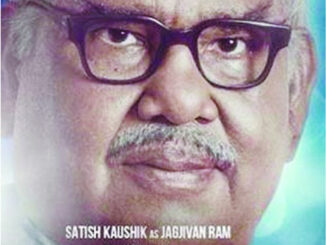
Lord Ganesha is the Son of Lord Shiva and Goddess Parvati. Since he is born out of their union, he personifies life, duality, and manifestation in diverse aspects. Ganesha is highly charming and mesmerizing. He is the remover of problems and obstacles. Lord Ganesha is worshiped by both Jainism and Buddhism.
The head of Lord Ganesha symbolizes the Atman or the soul, which is considered the ultimate reality of humanity and his human body symbolizes Maya, the trappings of earthly existence. Below are some of the interesting facts about Lord Ganesha.
Lord Ganesha Wrote the Mahabharata
It is believed that Rishi Vyasa requested Lord Ganesha to write the Mahabharata as he recited it. He decided to do it after Vyasa agreed to recite it without any interruptions and Vyasa, in turn, made him promise he would understand what was being said before he wrote it down.
Meaning of Ganapati
‘Gana’ means category. Everything that we perceive through our senses or grasp through our mind can be expressed in terms of category. The principle from which all such categories have manifested themselves is Ganapati, the Lord of categories. In effect, it means the origin of the whole creation, God Himself;
Meaning of Gajanana or Gajamukha
A common Sanskrit word to denote elephant is ‘Gaja’.Hence the name Gajanana or Gajamukha (elephant-faced) for Ganapati. But the word ‘Gaja’ has a deeper connotation. ‘Ga’ indicates ‘Gati’, the final goal towards which the entire creation is moving. ‘Ja’ stands for ‘Janma’ or birth or origin. Hence ‘Gaja’ signifies God from whom the worlds have come out and towards whom they are progressing, to be ultimately dissolved in Him. The elephant head is thus purely symbolical and points to this truth.
A factor we observe in creation is its two-fold manifestation as the microcosm (Suksmanda) and macrocosm (Brahmanda). Each is a replica of the other. They are one in two and two in one. The elephant head stands for the macrocosm and the human body for the microcosm. The two forms one unit. Since the macrocosm is the goal of the microcosm, the elephant part has been given greater prominence by making it the head.
Elephant-Human form of Ganapati
The elephant-human form of Ganapati is the iconographical representation of the great Vedantic dictum, ‘tat-tvam-asi'(which means You the apparently limited individual are in essence the Cosmic Truth, the Absolute). The elephant stands for the cosmic whereas the human stands for the individual.
Wives of Lord Ganesha
According to scriptures, Lord Ganesh had two wives Ridhhi (representing Prosperity) and Sidhhi (representing Intellectual Enlightenment). Furthermore, he had two sons – Ridhhi bore him Subha (representing Auspiciousness) while Sidhhi bore him Labha (representing Profit).
Birth of Lord Ganesha
According to Shiva Purana, it was Parvati’s friends Jaya and Vijaya’s decision to make Lord Ganesha. They had suggested Parvati that Nandi and others follow the instructions of Lord Shiva only. Therefore, there should be someone who follows Parvati’s orders too. Hence, Parvati made Ganesha from the dirt of her body.
Ganesh’s clothes
Lord Ganesha is usually portrayed wearing red and yellow clothes where red signifies the shakti and material reality and yellow symbolizes purity, peace, and truthfulness.
Elephant Head
Elephants are known for their wisdom and effortlessness. The larger head of an elephant signifies prosperity and power. An elephant neither walks around obstacles nor can any obstacles stop. It removes the obstacles and walks ahead.
Big belly
In most of the paintings, the Lord is depicted with a large belly. The large belly of the lord Symbolizes generosity and complete acceptance.
Wide mouth and large ears
The wide mouth of Ganesha represents that one must spend less time talking and utilizing one’s energies for thinking or doing. Large ears signify listening skills.
Small eyes
The small eyes of Ganesha denote the one having sharped focus and acute concentration.
Arms
The four arms indicate that the Ganesha is omnipresent and omnipotent. The right side symbolizes reason, and the left side symbolizes emotions.
Axe
Lord Ganesha holds an axe in the upper left hand and a noose in the upper right hand. The axe symbolizes the reduction of all desires, bearers of pain and suffering.
Tusk
The two tusks of the Lord denote the two aspects of the human personality, wisdom and emotion. The broken tusk of the Lord signifies the ability to keep the good and throw away the bad. It was his broken tusk with which the ancient scripture Mahabharat was written.
Lotus
Lord Ganesha is often depicted withholding a lotus in hand. It signifies that one must live in the world without being affected by others.
Mouse
A mouse is the vehicle of Lord Ganesha. It represents the lordship or control over fear, hesitation, and doubt. It means that Lord Ganesha has no ego.
Source: Vedicfeed




Be the first to comment